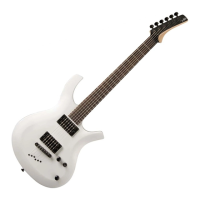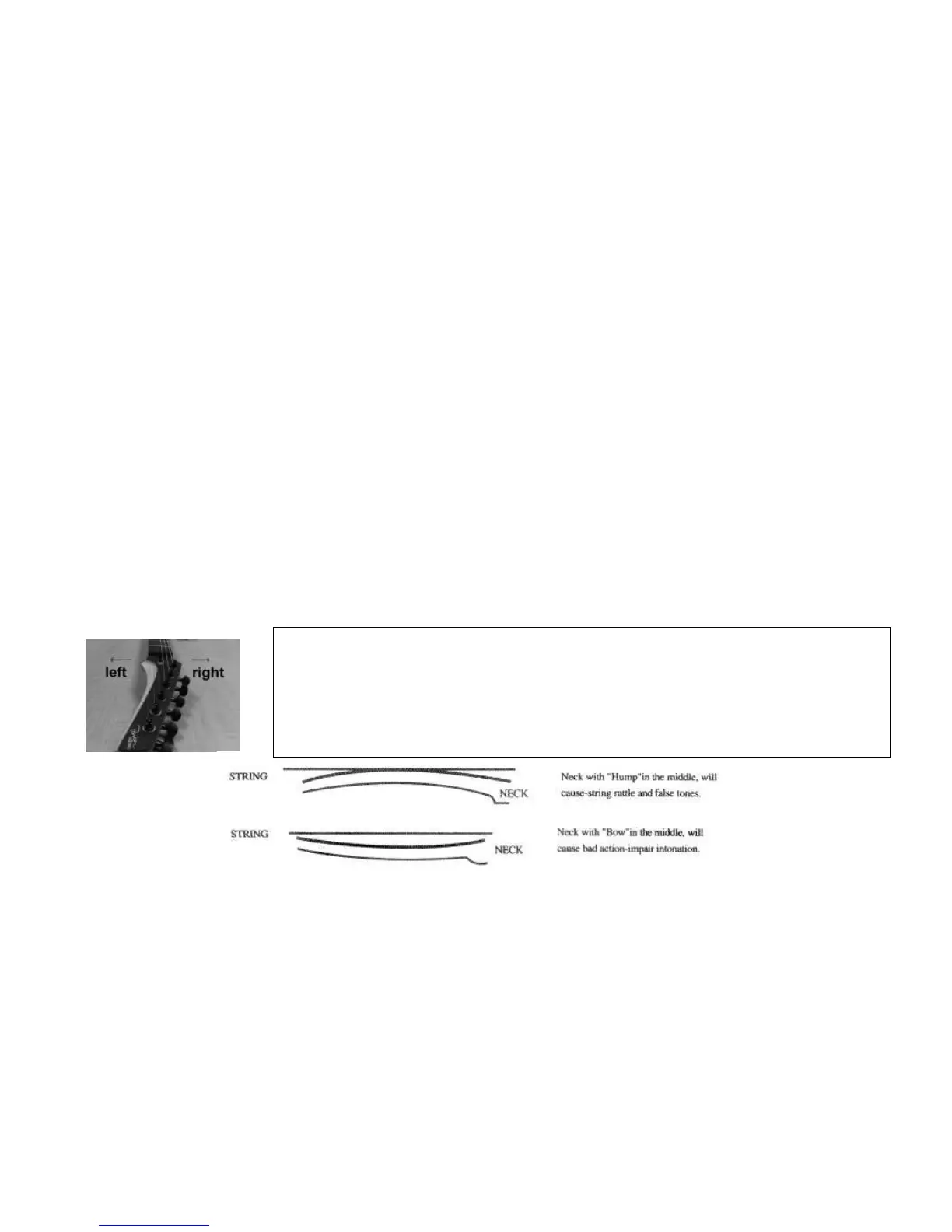Adjusting the neck
Depending on humidity and weather conditions, a time will come when your instruments neck may move forward or backward in pitch. This is inevitable and normal.
Generally, you will notice this occurrence by experiencing excessive string buzz (if the neck is too far back-bowed) or by excessively high action (if the neck is too far
forward-bowed) this can be confirmed by looking down the neck from the headstock vantage point. You will see the neck bending one way or the other.
To fix this issue, your instrument should receive a professional set-up. Your instrument features a truss rod, which runs down the length of the guitars neck. Turning this
truss rod will correct the pitch of the neck, and make the problem disappear. As always, minimal adjustments are key to a successful adjustment. Generally, a 1/4 turn is
more than enough to correct your average neck issue.
Before beginning, confirm that you are using the appropriately sized wrench. Because production runs can vary, you can confirm the correct size by fitting your available
wrench into the hole. If it fits nice and snug, you are using the correct wrench. A wrench too large will not fit, and a wrench too small will have too much give. Make these
adjustments carefully, and never force a turn. This will result in stripping the truss rod nut, at which point no further adjustments can ever be made. This will void your
instruments warranty.
** If you are uncomfortable making these adjustments, we recommend having the instrument professionally adjusted by a local Luthier. Improper adjustment will cause permanent damage to the instrument, and is not covered under the manufacturers’
warranty
.
If you are experiencing high action, look down the neck from the vantage point of the headstock of the instrument. Confirm that the neck has too much forward-bow. To
correct forward-bow, insert the truss rod Allen tool into the slot located behind your truss rod cover on the headstock. From the angle in the picture below, you will want to
make a ¼ turn to the right.
If you are experiencing excessive buzzing, look down the neck from the vantage point of the headstock of the instrument. Confirm that the neck has too much back-bow, insert
the truss rod Allen tool into the slot located behind your truss rod cover on the headstock. From the angle in the picture below, you will want to make a ¼ turn to the left
Minimal adjustments are key when adjusting the truss rod. Leave the instrument to sit and settle for an hour, and then look down the neck from the vantage point of the
headstock. You should see that the problem has improved. The goal is to have a relatively straight neck, with absolute minimal forward-bow.

